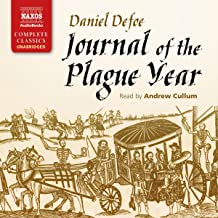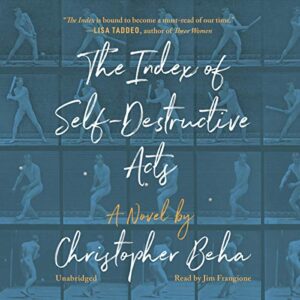First things first. The COVID-19 pandemic is deadly serious business, disrupting lives, the economy, and all that the word “economy” once encompassed—our households, common lives, and communal practices—before the word was appropriated by “the dismal science.” You, or people you know and love, have lost jobs, taken ill, been exposed, self-quarantined, or found themselves suddenly isolated, estranged, abandoned. As I write this, the United States is world leader in cases identified if not yet in virus-related deaths. There is much here to mourn and much more to learn from, in order to prepare and respond more effectively when the next pandemic comes along.
And come it will, mocking the peculiarly modern delusion that humans can manage the planet’s affairs according to our desires, as if our technology-enhanced powers and the earth’s material gifts had no limits. Having barely acknowledged, much less responded to, the logical consequences of what Wendell Berry calls our “Faustian economics”—global warming, unprecedented soil loss, oceanic dead zones, and mass extinction—we’re once again assaulted with pandemic pestilence (an entirely expected event, if not predictable in timing or detail), its global transmission sped by technologies we imagined were unalloyed goods. As Berry puts it,
The normalization of the doctrine of limitlessness has produced a sort of moral minimalism: the desire to be efficient at any cost, to be unencumbered by complexity. The minimization of neighborliness, respect, reverence, responsibility, accountability, and self-subordination—this is the “culture” of which our present leaders and heroes are the spoiled children.
The sudden imposition of social-distancing practices and “shelter in place” orders comes as a shock, reminding some of us, perhaps, of our bodily dependence on other embodied creatures.
Our species wasn’t always so naïve, a truth to which our religious and literary heritage attest. For those fortunate enough to wonder what to do with their involuntary down time besides binge-watching on Netflix, right now is an opportunity to rediscover some of that hard-earned wisdom. And if you’re looking for what sense others have made of plagues and pestilence, I have a few bookish ideas, not all of them as weighty or heavy as the preceding paragraphs suggest.
There are, of course, some classics, mostly concerning the disease caused by Yersinia pestis, otherwise referred to as the Black Death, Bubonic Plague, or simply “the plague.” Daniel Defoe’s novel (or is it creative nonfiction?), A Journal of the Plague Year, describes the Great Plague of 1665 through the eyes of an English saddler. Written circa 1721, when European powers were imposing quarantines to limit another outbreak, Defoe’s book is rich in detail as Restoration London is transformed through blind chance and human choice. Albert Camus’s The Plague is one of the great novels of the twentieth century, an existentialist’s search for meaning in a disease-stricken Algerian port city cut off from the rest of the world. A happier story is found in Alessandro Manzoni’s I Promessi Sposi (The Betrothed), though the eponymous couple weather unfathomable adversity on their way to the altar, and the accounts of famine, war, and plague (Chapters 28-33) are harrowing. Giovanni Bocaccio’s massive Decameron imagines fourteenth century Florentine plague refugees sharing stories of love and adventure to pass the time. The tales are often satirical, frequently bawdy, and generally entertaining even for twenty-first century sensibilities. The Little Hours, a raunchy movie loosely based on Bocaccio’s stories, may give you a sense of what he might come up with were he writing today.
Highly readable nonfiction accounts of the plague’s role in world history include William Rosen’s Justinian’s Flea, John Kelly’s The Great Mortality, and Norman Cantor’s In the Wake of the Plague. As coronavirus further exposes the fragility of global institutions, this might also be a good time to reconsider Barbara Tuchman’s A Distant Mirror: The Calamitous Fourteenth Century.
Few infectious diseases have inspired such flights of romantic fancy as tuberculosis, otherwise known as TB, consumption, or “the white plague.” Before its bacterial cause was identified, TB was thought to signal a sensitive, artistic nature, tragically doomed to an early death. If you’ve ever wondered how Violetta, the courtesan suffering from pulmonary TB in Verdi’s opera, La Traviata, belts out those high notes from her death bed, read Susan Sontag’s Illness as Metaphor. Sontag compares TB’s now diminished metaphoric power with modern takes on cancer, a juxtaposition also explored in Peter DeVries’s darkly comic novel, The Blood of the Lamb.
TB-related novels are legion. Thomas Mann’s epic, The Magic Mountain, is the quintessential depiction of the TB sanitorium as microcosm. Erudite, subtle, and ambiguous, the novel resists any fixed interpretation. Also set in a sanitorium, Andrea Barrett’s The Air We Breathe is a less ambitious novel than Mann’s, but its wonderfully rendered detail makes for rewarding reading. If you thought TB colonies were humorless detention centers, read Betty MacDonald’s witty memoir, The Plague and I. Who knew forced isolation could be so amusing?
There’s more to TB than sanitoria, however. Dostoevsky features consumptive nihilists in Crime and Punishment, The Idiot, and Demons (the title is sometimes translated The Possessed). More sympathetic TB sufferers recur in novels by Charles Dickens, Victor Hugo, and Shusaku Endo. Tuberculosis-fighting doctors, good and bad, appear in A.J. Cronin’s The Citadel, Endo’s The Sea and Poison, and John le Carré’s The Constant Gardener.
In epidemic fiction’s miscellaneous micro-organisms category, cholera plays a key role in W. Somerset Maugham’s The Painted Veil and Gabriel García Márquez’s Love in the Time of Cholera. Katherine Anne Porter’s novella, Pale Horse, Pale Rider, sensitively captures experiences of the 1918 influenza pandemic. The title story in Andrea Barrett’s luminous collection, Ship Fever, follows a Canadian doctor during an outbreak of typhus among arriving European immigrants. Shakespeare makes oblique references to syphilis in Measure for Measure and Othello, while more frank discussions appear in Voltaire’s Candide, Henrik Ibsen’s Ghosts, and Thomas Mann’s Doctor Faustus. Abraham Verghese’s luminous memoir, My Own Country, captures the fear and uncertainty of the AIDS epidemic as experienced in eastern Tennessee.
Accessible nonfiction sources on the significance of pandemics over time include William McNeill’s Plagues and Peoplesand Jared Diamond’s more speculative Guns, Germs, and Steel. David Quammen’s Spillover explains how and where modern pandemics start. Tracy Kidder’s Mountains Beyond Mountains introduces readers to the work of Paul Farmer, the physician-anthropologist who brings the best possible medical care to the world’s poorest communities. And I can’t resist mentioning “Epidemics, Networks, and Conversion,” a chapter in Rodney Stark’s The Rise of Christianity, describing how early urban Christians tended the plague stricken when pagan physicians fled to the countryside.
This list is, of course, incomplete and idiosyncratic. I’m sure you can think of jewels I’ve passed over in silence and, as I said at the beginning, there are more pressing issues right now than filling out your to-read list. Yet even as you contend with the daily disruptions and—I hope—less frequent existential crises of the ongoing pandemic, it helps to remember that humanity has weathered the like before and will do so again. So while medical scientists scramble to demystify this novel coronavirus, those compelled to sit and wait might find time to learn how our ancestors lived in a world of chastening limits—a world still very much with us.
Brian Volck is a pediatrician and writer living in Baltimore. He is the author of a poetry collection, Flesh Becomes Word, and a memoir, Attending Others: A Doctor’s Education in Bodies and Words. His website is Brianvolck.com





